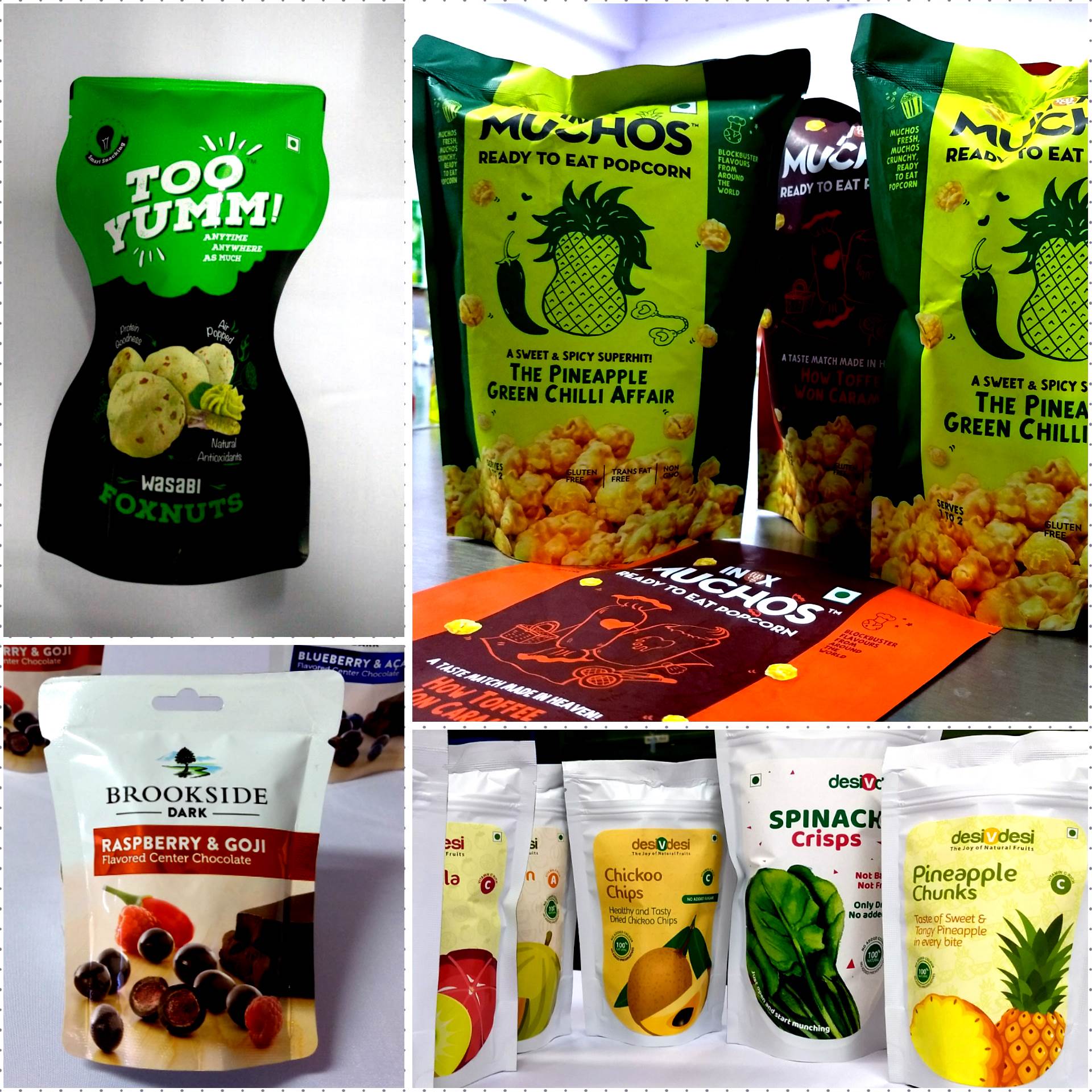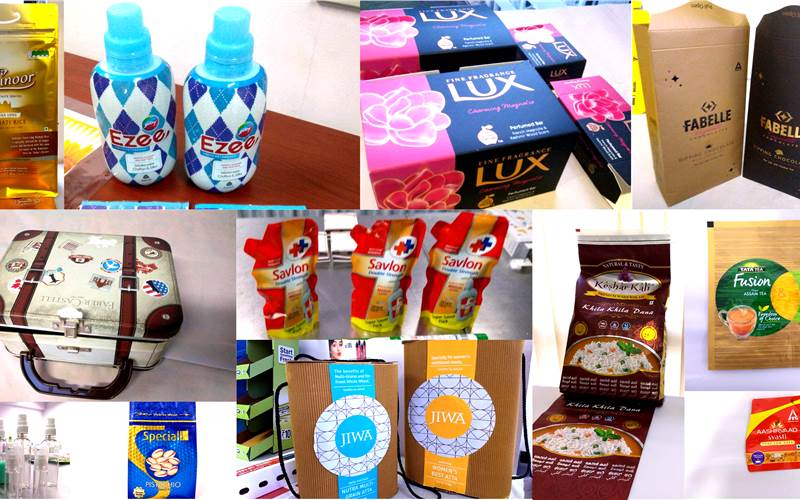Five packaging trends captured at the maiden SIES Star Awards
SIES School of Packaging (SOP) in Navi Mumbai launched the maiden SIES Star Awards, the jury for which is out since Saturday, 12 August 2017. While the result will be announced soon, WhatPackaging? Team was able to have sneak-peek at the packaging entries during the open house on 14 August.
In conversation with SOP director, PV Narayanan, five trends emerged.
15 Aug 2017 | By WhatPackaging? Team
1. The RTE and RTC segment is on the rise
The ready-to-cook and ready-to-eat segment have seen a lot of traction in the Indian packaged food market. Both established brands, as well as start-ups, are looking to tap this segment and packaging is an enabler. There are chip-and-dip combo packs for food products like flavoured nachos with salsa dip by Fizzy Foodlabs’ Colonel & Co. The compartmentalised thermoformed containers sealed by flexible laminate is a common format for these kinds of products.
Plus ready-to-eat food items like pop corns and wasabi are now available in high-barrier flexible pouches.
2. Stand up for convenience
The package designers are now looking at packaging beyond its primary functions of shelf differentiation and product protection. Convenience for the target group – millennial, senior citizens, single-person households – is what has prompted them to innovate. This is the reason why we see a lot of stand-up pouches on the retail shelf. A lot of stand-up pouches these days are spouted and some of these are re-closable. Not only are these popular in sauces and baby food segments, products like desi ghee, yoghurts etc can be seen using this pack format for smaller portion packs.
Stand-up pouches are replacing standard jars. One interesting micro trend in stand-up pouches is the emergence of profile pouches. The pouches give the product a unique presence on-shelf, and are designed to be more convenient and require less processing than standard jars. The profile pouches help save on the materials.
In the future, we can expect a lot of flexible packaging with zip-locks and easy-to-open features. This is evident in a lot of flexible bags for packaging of food grains and flour that have zip-locks and handles.

3. Metal remains premium
While brands are reluctant to do away with metal packaging especially in the premium range of products, the cost constraints compel them to look for low-cost alternatives. Metallisation is becoming more popular to make both ends meet.
Almost every liquor carton has some element of metal, most of it is by using a metallised PET laminated paperboard and some use hot foil or cold foil. In a lot of applications, metallisation has replaced use of aluminium foil. Having said that, the print effects and rich feel that companies like Zenith Tins has been achieving on tinplate is remarkable.

4. Sustainable innovations
Sustainability is becoming a focus for packaging moving beyond down gauging. We saw a few examples where packaging converters stressed on using polymers from a single family to form a laminate. This is a combination of barriers and LDPE and LLDPE. Some companies are also focusing on BOPP and CPP film structures. Use of co-extruded films is also on the rise. Then there are developments like laminating adhesives that can also act as a barrier help reduce the amount of material that goes into the packaging.
5. Local brands go global
Packaging is enabling local brands like Haldiram’s and Sri Krishna Sweets boost shelf life and make their products available pan-India and perhaps also export to other countries. Correct use of modified atmospheric packaging and the right choice of packaging materials is bringing these kinds of traditionally unpacked food products into packaged food category.














 See All
See All